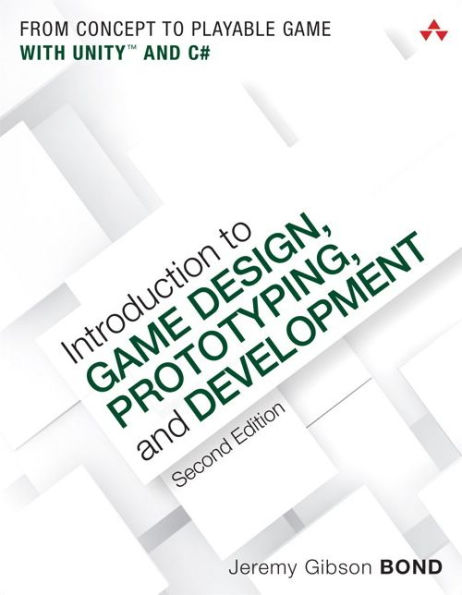Master the Unity Game Engine to Design and Develop Games for Web, Mobile, Windows, macOS, and More!
If you want to design and develop games, there's no substitute for strong hands-on experience with modern techniques and tools--and that is exactly what this book provides. The first edition was frequently the top-selling game design book on Amazon, with more than 70% of the reviews being 5 stars. In a testament to the iterative process of design, this new edition includes hundreds of improvements throughout the text, all designed to make the book easier to understand and even more useful. This book was written with Unity 2017; the book.prototools.net website will cover changes for later versions of the software.
Award-winning game designer and professor Jeremy Gibson Bond has spent more than a decade teaching game design and building great games. In that time, his most successful students have been those who combine knowledge of three critical disciplines: game design theory, rapid iterative prototyping, and practical programming. In this book, Bond distills the most important aspects of all three disciplines into one place.
Part I: Game Design and Paper Prototyping
- The Layered Tetrad framework: a synthesis of 50 years of game design theory
- Proven practices for brainstorming and refining game designs through the iterative process of design
- Methods and tools to manage game projects and small teams
- Processes to make playtesting and feedback easier
Part II: Digital Prototyping with Unity and C#
- Chapters that guide you through learning C# the right way
- Instruction that takes you from no prior programming knowledge through object-oriented programming
- Deep exploration of Unity, today's most popular game engine on both macOS and Windows
- Methods for understanding and debugging code issues you encounter
Part III: Game Prototype Examples and Tutorials
- In-depth tutorials for seven different game prototypes, including a simple action game, a space shooter, a solitaire card game, a word game, and a top-down adventure
- Instructions to compile these games for PC, web, or any of the dozens of other release platforms supported by Unity
- Improved structure and layout that makes the steps of each tutorial easier to follow
- A completely new Dungeon Delver prototype not present in the first edition
Master the Unity Game Engine to Design and Develop Games for Web, Mobile, Windows, macOS, and More!
If you want to design and develop games, there's no substitute for strong hands-on experience with modern techniques and tools--and that is exactly what this book provides. The first edition was frequently the top-selling game design book on Amazon, with more than 70% of the reviews being 5 stars. In a testament to the iterative process of design, this new edition includes hundreds of improvements throughout the text, all designed to make the book easier to understand and even more useful. This book was written with Unity 2017; the book.prototools.net website will cover changes for later versions of the software.
Award-winning game designer and professor Jeremy Gibson Bond has spent more than a decade teaching game design and building great games. In that time, his most successful students have been those who combine knowledge of three critical disciplines: game design theory, rapid iterative prototyping, and practical programming. In this book, Bond distills the most important aspects of all three disciplines into one place.
Part I: Game Design and Paper Prototyping
- The Layered Tetrad framework: a synthesis of 50 years of game design theory
- Proven practices for brainstorming and refining game designs through the iterative process of design
- Methods and tools to manage game projects and small teams
- Processes to make playtesting and feedback easier
Part II: Digital Prototyping with Unity and C#
- Chapters that guide you through learning C# the right way
- Instruction that takes you from no prior programming knowledge through object-oriented programming
- Deep exploration of Unity, today's most popular game engine on both macOS and Windows
- Methods for understanding and debugging code issues you encounter
Part III: Game Prototype Examples and Tutorials
- In-depth tutorials for seven different game prototypes, including a simple action game, a space shooter, a solitaire card game, a word game, and a top-down adventure
- Instructions to compile these games for PC, web, or any of the dozens of other release platforms supported by Unity
- Improved structure and layout that makes the steps of each tutorial easier to follow
- A completely new Dungeon Delver prototype not present in the first edition

Introduction to Game Design, Prototyping, and Development: From Concept to Playable Game with Unity and C#
1024
Introduction to Game Design, Prototyping, and Development: From Concept to Playable Game with Unity and C#
1024Paperback(New Edition)

Product Details
| ISBN-13: | 9780134659862 |
|---|---|
| Publisher: | Pearson Education |
| Publication date: | 08/20/2017 |
| Series: | Game Design |
| Edition description: | New Edition |
| Pages: | 1024 |
| Product dimensions: | 7.00(w) x 8.90(h) x 1.80(d) |
